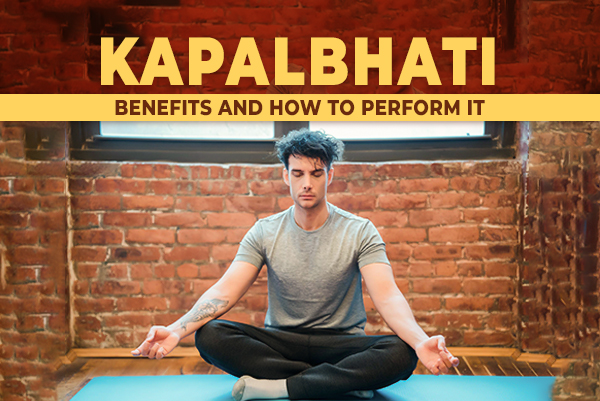Kapalbhati Pranayama


Table of Content
Kapalbhati: The Shining Forehead Pranayama
Kapalbhati is a type of pranayama, where 'Kapal' means “forehead” and 'Bhati' means “to shine”. Although it is a type of pranayama, it is included under shatkarma (a cleansing process). Shatkriya includes:
- Neti (Nasal cleansing)
- Dhauti (Cleansing of the digestive tract)
- Basti (Colon cleansing)
- Nauli (Abdominal massage)
- Tratak (Gazing)
- Kapalbhati (Frontal lobe cleansing)
Kapalbhati is a cleansing process involving rapid breathing. This pranayama is specifically for intermediate and advanced level yogis. If you are new to pranayama, start with other breathing exercises like Anulom Vilom. Once you gain control of your breath, you can practice Kapalbhati. Do not start with Kapalbhati as it is an intense breathing exercise.
How to Do Kapalbhati
- Step 1: Sit in a comfortable posture, such as lotus pose or any other meditation pose that is comfortable for you.
- Step 2: Ensure your head, neck, and spine are in a straight line, shoulders relaxed, and sit in a quiet and peaceful room.
- Step 3: Take a deep breath and exhale the air forcefully. During inhalation, feel and observe the air entering the abdomen. During exhalation, pull your navel towards the spine and exhale forcefully.
- Step 4: Observe how your abdominal muscles contract and relax.
- Step 5: A major point to note while practicing Kapalbhati is that exhalation should be done forcefully, and one should not retain or hold the breath.
- Step 6: Repeat the process 15-20 times (for intermediate and advanced practitioners). Gradually increase the number of repetitions.
- Step 7: Practice this pranayama under guidance.
Benefits
- Soothes and calms the mind and body, making you feel energized.
- Makes your skin glow by flushing out toxins from the cells and body.
- Increases lung capacity and treats respiratory issues like sinusitis and asthma.
- Improves mental health and reduces stress by calming the mind.
- Tones the abdominal muscles, aiding in the digestion process.
Breathing
- Take a deep inhale and forcefully exhale the air out. Do not hold the breath.
- After completing the strokes, take one deep inhale, hold the breath, and then exhale.
- Repeat the process for 2-3 long breaths.
Population
This pranayama should be done under guidance. People who practice yoga and fall under the category of intermediate and advanced yogis should perform this pranayama.
Contraindications/Precautions
- Pregnant women should avoid this pranayama.
- Menstruating women should not perform this pranayama.
- People with major respiratory or cardiovascular issues should avoid this pranayama.
- People who have undergone major surgery should avoid this pranayama.
- People with high blood pressure should not perform this pranayama.
FAQs
- Q: Should everyone do this pranayama?
A: No, Kapalbhati is an intensive breathing exercise and should always be done under the guidance of a Yoga Instructor. Beginners should not practice Kapalbhati. - Q: Can we hold the breath?
A: Retention of breath can only be achieved once you have mastered this pranayama. Otherwise, do not hold the breath.
क्या आप योग में करियर बनाने को लेकर "Confuse" हैं?
Join Free Webinar By Maneesh Sir
- Know About Opportunities in the Growing Yoga Sector.
- Learn from a Yoga Teacher with Over 15 Years of Experience.
- Special Offer for Webinar Attendees.

